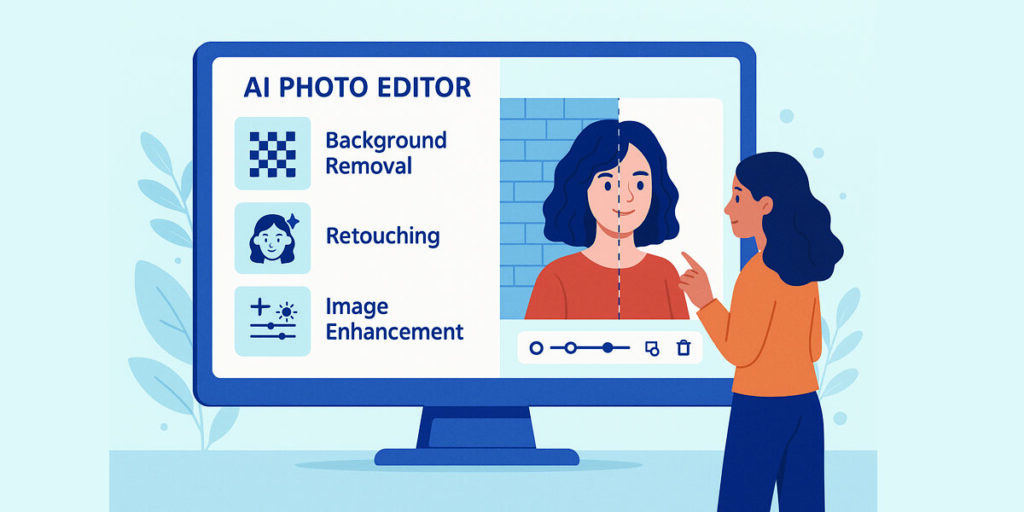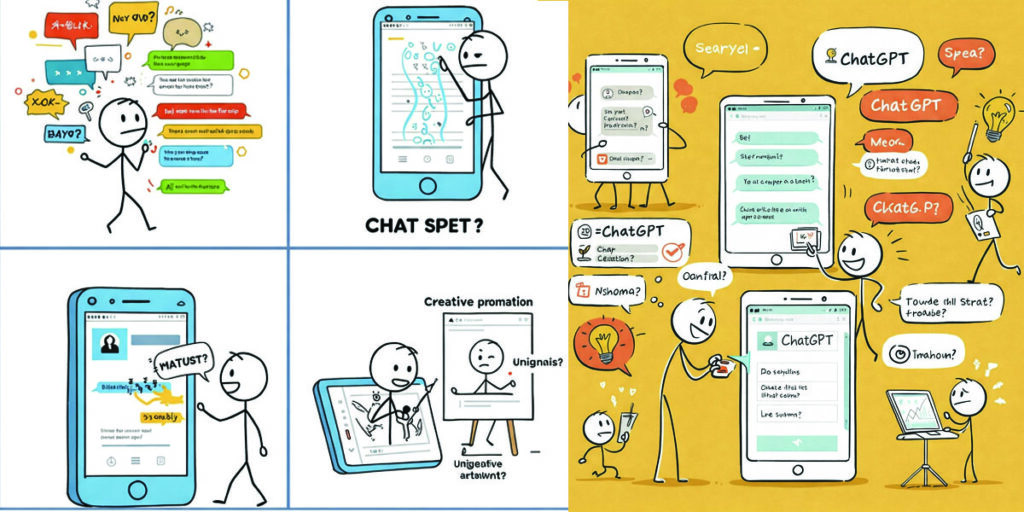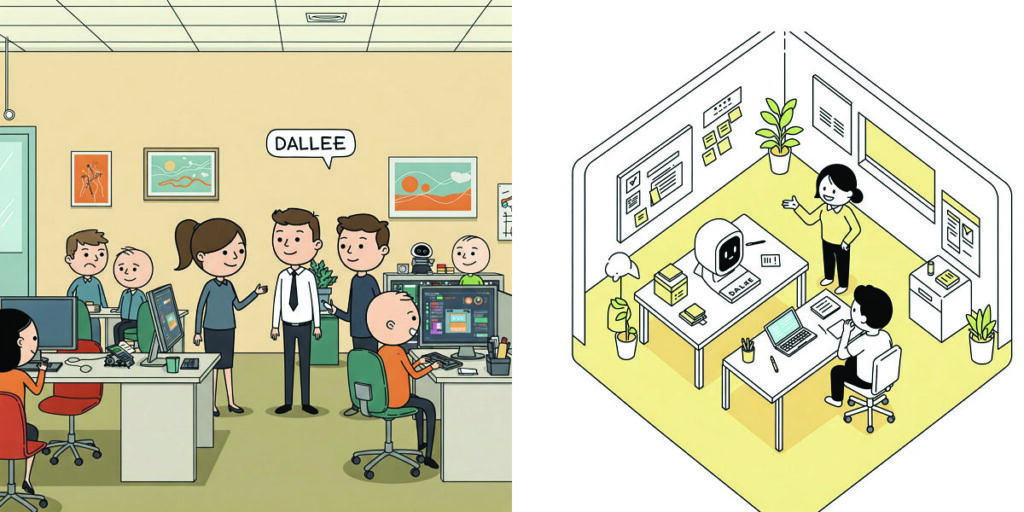AI photo editor for background removal, retouching, and image enhancement.
The landscape of digital imagery has been irrevocably transformed by the advent of Artificial Intelligence, moving photo editing from a domain primarily requiring intricate manual skill to one where sophisticated algorithms can democratize powerful creative tools. At the forefront of this revolution is Fotor AI, a platform that has evolved significantly since its inception to become a prominent player in the AI-powered photo editing market, particularly recognized for its capabilities in background removal, retouching, and image enhancement. This article delves into the history of Fotor’s journey into AI, analyzes its position and impact within the burgeoning economic market for AI photo editing software, and explores the role of networking and technological integration in shaping its features and success.
From General Editor to AI Powerhouse: The History of Fotor AI
Founded in 2012, Fotor initially entered the digital creative space as a comprehensive, multi-platform photo editing software. Its early offerings focused on providing users with a range of fundamental editing tools, including basic adjustments like cropping, brightness and contrast control, as well as more creative options such as filters, frames, and collage-making capabilities. Available as a web application, desktop software for Windows and macOS, and mobile apps for iOS and Android, Fotor aimed to provide accessible photo editing to a broad audience, from casual users to more enthusiastic photographers. The platform’s ease of use and availability across different devices contributed to its early popularity.
The mid-2010s saw a significant shift in the tech industry with the increasing maturation and application of Artificial Intelligence, particularly in computer vision and machine learning. Recognizing the potential of these technologies to revolutionize photo editing, Fotor began to integrate AI into its platform. This wasn’t a sudden pivot but a gradual evolution, starting with the introduction of AI-powered features that automated complex or time-consuming tasks.
One of the early areas where AI made a noticeable impact on Fotor was in one-tap enhancement tools. These features, powered by AI algorithms trained on vast datasets of images, could analyze a photograph and automatically apply a series of adjustments – such as optimizing exposure, color balance, and sharpness – to improve its overall quality with a single click. This significantly lowered the barrier to entry for users who lacked the technical knowledge or time for manual adjustments, offering a quick and effective way to enhance their images.
The development of more sophisticated AI models paved the way for Fotor to introduce more advanced features that are now central to its offering. AI background removal became a key area of focus. Traditionally, accurately removing the background from an image required painstaking manual selection using tools like the magic wand or pen tool, a process that could be particularly challenging with intricate details like hair or complex edges. Fotor’s AI background remover, leveraging techniques like semantic segmentation, was designed to automatically identify the subject of an image and create a precise mask to separate it from the background. This feature proved incredibly valuable for e-commerce, graphic design, and social media content creation, drastically reducing the time and effort required to isolate subjects for use in various contexts.
Concurrent with the advancements in background removal was the integration of AI into photo retouching. AI retouching tools on the Fotor platform began to automate common portrait editing tasks. This included features for skin smoothing, blemish removal, and even more nuanced adjustments like reducing wrinkles or enhancing eyes. These AI-powered tools could analyze facial features and apply edits in a natural-looking way, saving users considerable time compared to manual cloning, healing, and brushing techniques. The AI aimed to understand the underlying structure of faces to apply edits intelligently, rather than simply applying generic effects.
Image enhancement, a broad category encompassing various improvements to image quality, also saw significant advancements through AI on the Fotor platform. Beyond the initial one-tap enhancement, AI was applied to tasks like noise reduction, deblurring, and upscaling. AI noise reduction algorithms could intelligently differentiate between actual image details and random noise artifacts, effectively cleaning up grainy photos without sacrificing sharpness. AI deblurring aimed to mitigate the effects of camera shake or motion blur, attempting to restore clarity to otherwise compromised images. AI upscaling, a particularly impressive application, allowed users to increase the resolution of their images without the significant loss of quality typically associated with traditional resizing methods. By analyzing the image content, AI could intelligently generate new pixels to enlarge the image while preserving or even enhancing details.
The historical trajectory of Fotor, therefore, shows a clear evolution from a general-purpose photo editor to a platform increasingly leveraging Artificial Intelligence to automate and enhance key editing workflows. The introduction and refinement of AI background removal, retouching, and image enhancement tools have been central to this evolution, positioning Fotor as a competitive force in the digital creative market.
Economic Landscape and Fotor’s Market Position
The economic market for AI photo editing software is experiencing significant growth, driven by several key factors. The proliferation of smartphones with high-quality cameras has led to an explosion in the volume of digital photos captured daily. This, coupled with the pervasive influence of social media and the increasing demand for visually appealing content across various digital platforms (e-commerce, advertising, personal blogs), has created a massive user base for photo editing tools.
The traditional photo editing software market, historically dominated by professional-grade tools like Adobe Photoshop, is being disrupted by the rise of more accessible and often more automated AI-powered alternatives. Users, both professional and amateur, are increasingly seeking tools that can deliver high-quality results quickly and efficiently, without requiring extensive technical expertise. This is where platforms like Fotor AI have found a strong foothold.
Market research indicates a robust growth trajectory for the AI image editor market. Reports project the market size to reach billions of dollars in the coming years, with a significant compound annual growth rate. This growth is fueled by the increasing integration of AI and machine learning, which simplifies complex editing processes and enables creative automation.
Fotor operates within this dynamic and competitive landscape. Its business model typically involves a freemium approach, offering a range of basic editing features for free while gating more advanced AI-powered tools and resources behind a subscription model (Fotor Pro or similar tiers). This allows Fotor to attract a large user base with the free offering and convert a portion of these users into paying subscribers who require more powerful capabilities, such as high-resolution downloads after background removal or access to a wider array of retouching options.
Fotor competes with a variety of players, ranging from established creative software giants like Adobe (with their AI features in Photoshop and Lightroom) to other popular mobile-first editing apps like Picsart and Canva, which have also heavily invested in AI. Niche AI photo editing tools focusing on specific tasks like background removal (e.g., Remove.bg) or image enhancement (e.g., Topaz Labs) also represent direct or indirect competition.
Fotor’s market position is characterized by its attempt to strike a balance between comprehensive functionality and user accessibility. While not always possessing the absolute deepest feature set for high-end professional work compared to industry leaders, Fotor’s strength lies in its ease of use and the effectiveness of its core AI tools – particularly background removal, retouching, and enhancement – for a broad range of users, including small businesses, social media managers, content creators, and amateur photographers. Its cross-platform availability further enhances its reach and convenience.
The economic impact of Fotor and similar AI photo editors is multifaceted. For individual users and small businesses, these tools democratize access to professional-looking image editing, enabling them to create compelling visual content without significant investment in expensive software or professional services. This can lead to improved marketing materials, more engaging social media presence, and ultimately, potentially increased sales or reach.
For the broader creative industry, AI photo editing tools are changing workflows. While some initially viewed AI with apprehension, many professionals are now integrating these tools to speed up repetitive tasks (like background removal for product catalogs) or to achieve results that were previously difficult or impossible. This allows creative professionals to focus more on the artistic and strategic aspects of their work.
Fotor’s revenue generation through subscriptions contributes to the overall economic activity in the software market. Furthermore, the demand for the underlying AI technologies that power Fotor’s features also stimulates investment and innovation in the field of Artificial Intelligence.
The economic success of Fotor is intrinsically linked to its ability to deliver effective and user-friendly AI-powered solutions that address the growing demand for efficient and high-quality image editing across various segments of the market.
Networking and the Technological Backbone of Fotor AI
The concept of “networking” in the context of Fotor AI can be interpreted in several ways, encompassing the technological infrastructure that supports its AI features, the integration with other platforms and services, and potentially the creation of a user community.
From a technological standpoint, the powerful AI capabilities offered by Fotor, such as sophisticated background removal, nuanced retouching, and advanced image enhancement, rely heavily on robust computing infrastructure and interconnected AI models. These AI models, particularly those based on deep learning, require significant computational resources for training and inference (applying the trained model to new data, i.e., user images).
Cloud computing plays a crucial role in this. Fotor, like many modern software platforms, leverages cloud services to power its AI features. As highlighted in search results, Fotor utilizes Amazon Web Services (AWS), including services like Amazon Bedrock, Amazon SageMaker, and Amazon Rekognition. These services provide the scalable computing power and pre-built AI capabilities necessary to run complex algorithms for image analysis and manipulation.
The “networking” in this context refers to the interconnectedness of various components within Fotor’s technical architecture:
- Data Ingestion and Processing: User-uploaded images are sent to cloud servers.
- AI Model Inference: The relevant AI models (e.g., for background removal, facial recognition for retouching, image analysis for enhancement) process the images. This often involves complex neural networks that have been trained on massive datasets. The ability to quickly and efficiently pass image data through these models is critical for performance.
- Feature Application: The results of the AI processing (e.g., a mask for background removal, detected blemishes for retouching, suggested adjustments for enhancement) are then used by Fotor’s editing engine to apply the requested changes to the image.
- Output Delivery: The edited image is then delivered back to the user.
This entire process requires a high-speed and reliable network infrastructure to handle the transfer of potentially large image files and the communication between different services within the cloud environment. The performance and responsiveness of Fotor’s AI features are directly dependent on the efficiency of this underlying network and computing architecture.
Beyond its internal technical architecture, Fotor also engages in a form of “networking” through integrations with other platforms and services. While not as extensively detailed in the initial search results as its core features, the mention of integrations via platforms like Latenode provides insight into this aspect. These integrations allow users to connect Fotor with other applications in their workflow, such as cloud storage services (like Google Drive) or communication platforms (like Slack).
Examples of such integrations demonstrate how Fotor can become part of a larger networked workflow:
- Generating an image with an AI image generator (potentially an external service integrated with Fotor or a feature within Fotor itself), then automatically sending it to Fotor for background removal or enhancement, and finally uploading the processed image to cloud storage.
- Using Fotor to edit product photos and then automatically sending the edited images with generated descriptions (perhaps using another AI service) to a platform like Slack for team review or publishing.
These examples illustrate how Fotor can “network” with other digital tools, extending its utility beyond a standalone editor and enabling more streamlined and automated creative workflows. This interconnectedness is increasingly important in the digital landscape, where users often utilize multiple applications to achieve their goals.
While the search results did not highlight extensive community-based networking features within Fotor itself (like a dedicated forum for sharing tips or collaborative editing features), many creative platforms foster a sense of community around the work created with their tools, often leveraging social media for sharing and inspiration. Fotor’s presence and the ease with which users can create shareable content with its AI tools indirectly contribute to this broader creative “network” online.
The AI models themselves can also be seen as part of a larger “network” of learning and improvement. The performance of Fotor’s AI features is dependent on the quality and diversity of the data used to train the underlying models. As AI technology advances, new models and techniques emerge, and platforms like Fotor must continuously update and refine their AI capabilities to remain competitive. This involves leveraging the broader advancements and research in the field of Artificial Intelligence, creating a dependency on the progress of the wider AI ecosystem.
In summary, the “networking” aspect of Fotor AI encompasses the sophisticated cloud infrastructure and interconnected AI models that power its core features, the integrations with external platforms that enable streamlined workflows, and its participation in the broader digital creative ecosystem where user-generated content is shared and inspires others. This technological and collaborative interconnectedness is fundamental to Fotor’s ability to deliver its AI-powered photo editing services effectively and to remain relevant in a rapidly evolving market.
Fotor’s Core AI Features: Background Removal, Retouching, and Image Enhancement in Detail
To fully appreciate Fotor’s impact and capabilities, a closer look at its key AI features – background removal, retouching, and image enhancement – is essential. These features are not just individual tools but represent categories of AI-powered functionalities that address common and often challenging photo editing tasks.
AI Background Removal:
Fotor’s AI background remover is a prime example of how AI can automate a previously tedious manual process. The underlying technology typically involves sophisticated image segmentation algorithms, often powered by deep convolutional neural networks (CNNs). These networks are trained on massive datasets of images where the subjects have been meticulously labeled and separated from their backgrounds.
When a user uploads an image for background removal, the AI model analyzes the image to identify the main subject. It looks for cues such as edges, textures, colors, and the overall composition to distinguish the foreground subject from the background. The trained model can then generate a precise alpha mask, which is essentially a layer that defines the transparency of each pixel. Pixels belonging to the subject are marked as opaque, while those belonging to the background are marked as transparent.
The effectiveness of Fotor’s AI background remover is judged by its accuracy, particularly in handling complex edges like hair, fur, or intricate details. Advanced algorithms within the AI aim to minimize artifacts and produce clean, smooth cutouts. Once the background is removed, users are typically presented with a transparent background, allowing them to place the subject onto a new background, a solid color, or use it in graphic design projects.
The economic significance of this feature is substantial, especially for e-commerce businesses that need to display products with clean, white backgrounds, or for marketers creating product mockups and advertisements. What once required hours of manual work can now be done in seconds, leading to significant cost and time savings.
AI Retouching:
AI retouching in Fotor focuses on automating and improving the process of perfecting portraits and other images containing people. This involves a suite of tools powered by AI models trained to understand facial anatomy and common imperfections.
Key AI retouching features often include:
- Skin Smoothing: AI algorithms can detect skin areas and apply intelligent smoothing effects to reduce blemishes, wrinkles, and uneven skin tone while preserving natural textures and details.
- Blemish Removal: AI can automatically identify and remove imperfections like acne, moles, and scars.
- Eye Enhancement: AI can brighten eyes, enhance the whites, and even make subtle adjustments to the iris for more striking portraits.
- Teeth Whitening: AI can detect teeth and apply a natural-looking whitening effect.
- Reshaping: Some advanced AI retouching tools can even offer subtle facial reshaping options, allowing users to adjust features like jawline or nose shape, though ethical considerations regarding the manipulation of appearance are important here.
The AI models for retouching often employ techniques like facial recognition to locate features accurately and generative adversarial networks (GANs) or similar models to generate plausible textures and details when removing imperfections or smoothing skin.
Economically, AI retouching is valuable for portrait photographers who need to process a large volume of images, individuals looking to enhance their social media photos, and businesses creating marketing materials featuring people. It significantly reduces the time spent on manual retouching, allowing for faster turnaround times and increased productivity.
AI Image Enhancement:
AI image enhancement in Fotor covers a broad spectrum of automatic improvements to image quality. This goes beyond basic adjustments and leverages AI to analyze the image content and context to apply intelligent enhancements.
Core AI image enhancement features include:
- One-Tap Enhance: As mentioned earlier, this foundational AI feature analyzes the image and applies a combination of adjustments (exposure, contrast, saturation, sharpness, etc.) for an overall improvement.
- Noise Reduction: AI algorithms can identify and reduce random noise (grain) in photos, particularly noticeable in low-light images, without blurring important details.
- Deblurring: AI attempts to analyze blurred areas and intelligently reconstruct details to sharpen the image. This is particularly useful for slightly out-of-focus photos or those affected by motion blur.
- Upscaling: AI upscaling allows users to increase the resolution of an image without the pixelation and loss of quality associated with traditional resizing. AI models generate new pixels based on the surrounding content, creating a higher-resolution image with preserved or even enhanced details.
- Color Correction and Grading: AI can analyze the color balance and overall tone of an image and suggest or automatically apply corrections to make colors more accurate and visually appealing.
The AI models for image enhancement often utilize CNNs for analyzing image content and identifying areas that need improvement. For tasks like upscaling and deblurring, generative models play a significant role in creating new pixel information.
The economic benefits of AI image enhancement are widespread. For photographers, it can save time on post-processing and help rescue images that might otherwise be unusable. For businesses, enhanced images can lead to more professional-looking product photos and marketing materials, which can positively impact customer perception and sales. For everyday users, it provides an easy way to improve the quality of their personal photos.
These three core AI features – background removal, retouching, and image enhancement – are central to Fotor’s value proposition in the AI photo editing market. They demonstrate the platform’s commitment to leveraging Artificial Intelligence to make powerful editing capabilities accessible and efficient for a wide range of users.
The Future of Fotor AI and the AI Photo Editing Market
The history of Fotor AI is one of continuous adaptation and integration of emerging technologies. Its evolution from a standard photo editor to an AI-powered platform reflects the broader trends in the digital creative industry. The economic market for AI photo editing is projected to continue its rapid growth, driven by ongoing advancements in AI and the increasing demand for efficient and intelligent creative tools.
For Fotor, the future will likely involve further refinement and expansion of its AI capabilities. This could include:
- More sophisticated and nuanced AI models: Improving the accuracy and naturalness of background removal, retouching, and enhancement, particularly for complex cases.
- New AI-powered features: Exploring other areas of image manipulation that can be automated or enhanced by AI, such as object removal, style transfer, and even AI-guided composition.
- Deeper integrations and workflow automation: Expanding its “networking” capabilities to seamlessly integrate with a wider range of creative and business platforms.
- Personalization of AI tools: Developing AI features that can learn from user preferences and editing styles to provide more personalized suggestions and automated workflows.
- Increased focus on mobile AI editing: As mobile devices become increasingly powerful, Fotor will likely continue to enhance its mobile AI editing experience.
The competitive landscape will also continue to evolve, with both established players and new startups pushing the boundaries of what AI can do in photo editing. The increasing availability of open-source AI models and cloud-based AI services may lower the barrier to entry for new competitors, potentially leading to further innovation and specialization in the market.
The ethical considerations surrounding AI in photo editing, particularly concerning realistic retouching and the potential for misuse, will also remain a crucial topic. Fotor, like other platforms, will need to navigate these challenges and potentially implement features or guidelines to promote responsible AI usage.
Fotor AI’s journey highlights the transformative power of Artificial Intelligence in the creative industry. Its historical development, its position within the dynamic economic market for AI photo editing, and its reliance on sophisticated technology and increasing integration with other platforms all contribute to its role as a significant player. As AI continues to advance, platforms like Fotor will likely play an even more critical role in shaping how we create, edit, and interact with digital images. The ongoing development of features like AI background removal, retouching, and image enhancement will not only improve the efficiency and accessibility of photo editing but also unlock new creative possibilities for users across the globe.




















